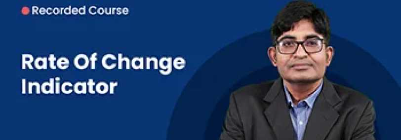 Agencies
AgenciesIn an interview with ETMarkets, Kapoor said: “Based on my calculations through FY40, I can maintain a fiscal deficit between 4.5% and 3.5% and still achieve a capex-to-GDP ratio in excess of 4.5%. That is the advantage of shifting from fiscal deficit to debt-to-GDP as a fiscal anchor,” Edited excerpts:
What are the key drivers of the strong recovery in the PSU asset cycle, and how does this align with the government’s spending trends?
Garima Kapoor: Our analysis of the last 25 years of PSU asset cycles tells us that government spending leads PSU asset growth with a two-year lag, and PSU asset growth tends to be a very strong determinant of its earnings growth. So, as long as I can put visibility on government spending, by default, I can put greater visibility and affirmation on the PSU asset cycle, and hence the earnings cycle is here to stay.
Currently, the government spending cycle, notwithstanding this year’s blip (which we think is a blip, and we will discuss the reasons later), looks to be on the path of continued increase. Secondly, PSUs today are more operationally efficient than they have ever been in the last 25 years of India’s history. Both of these factors give me conviction about PSU earnings and asset growth.
Fore more details watch: India PSU Cycle: Resurgent & Secular
How does the two-year lag between the GOI spending cycle and the PSU asset cycle impact earnings visibility for the next three years?
Garima Kapoor: Broadly, if you look at central government PSUs, government spending, particularly on capex, started picking up during the first year of COVID, and you have seen that gradually reflect in the earnings growth of PSUs. Last year, a segment of PSUs, excluding banks, clocked earnings growth of about 15% CAGR. In the previous cycle, they also saw further CAGR growth of around the same level between FY16 and FY24.
What is critical now is that if the government continues to spend, even with minor dislocations of a few months, and its order pipeline remains strong, there is nothing in the spending cycle to prevent PSU asset growth from remaining firm.
While the first seven months of the current spending cycle have been sluggish, with a de-growth of 12%, the order pipeline is starting to pick up. The spending of the last two years is currently reflecting in the asset and earnings growth of PSUs, rather than the spending of the past six months. As long as the recovery is swift and the de-growth is short-lived, the visibility remains intact.
Despite concerns about slowing government capex, you mention the policy drivers remain intact. What factors are ensuring the robustness of the capex pipeline, particularly in strategic sectors like Defense, Railways, and Power?
Garima Kapoor: I would say these three sectors are likely to drive policy continuity in India. Railways, for instance, is closely tied to the government’s commitment to improving logistics, so it is strongly dependent on sustained government focus.
In defense, there are both pull and push factors. We aim to indigenize our defense sector. The changing global order no longer allows reliance on just one or two countries. Additionally, we have ambitious defense export targets. Most importantly, the U.S., under Trump, has moved away from being a universal provider of military aid, leading smaller countries or like-minded nations like India to seek export opportunities.
Our strategic importance in the Indian Ocean, along with the recognition of this importance by large global players like the U.S., makes defense a critical sector.
As for power, we have a robust pipeline of nearly Rs 30 lakh crore planned over the next six to seven years, covering thermal, new energy, biogas, hydrogen, and transmission projects. Visibility and continuity are the two significant drivers here. Even if spending experiences minor disruptions for a few months in a given year, it should not derail the strong visibility for at least the next 10 years.
How does the government’s pivot to the debt-to-GDP ratio as a fiscal anchor impact long-term PSU capex cycles?
Garima Kapoor: The biggest question I get asked all the time is: "Intent is fine, great, I agree with your point that the intent is there, the government's willingness is there. But where is the money? Show me the money." This is the most important part of the thesis relating to PSU earnings growth.
Somewhere in the last budget, the Honourable Finance Minister, in her speech, made a reference to pivoting towards the debt-to-GDP ratio as a fiscal anchor, moving away from the fiscal deficit. Now, what this does is, at a very conservative number—even if I assume a 10% growth in nominal GDP, a conservative receipts growth of not more than 11% (compared to the 14% we are currently seeing), and a consistent 7%-8% increase in revenue expenditure—as long as the fiscal deficit does not grow faster than GDP on a year-on-year basis, the debt-to-GDP ratio will decline.
Using a simple rule of thumb, as long as fiscal prudence is maintained, it is possible to achieve a gradual downward trajectory in the debt-to-GDP ratio without compromising too much on fiscal deficit or fiscal space. Based on my calculations through FY40, I can maintain a fiscal deficit between 4.5% and 3.5% and still achieve a capex-to-GDP ratio in excess of 4.5%. That is the advantage of shifting from fiscal deficit to debt-to-GDP as a fiscal anchor.
With the private capex cycle remaining sluggish, how critical is government capital spending in driving economic growth?
Garima Kapoor: The answer to that was evident in the second-quarter GDP numbers. When the government was not spending, and the private sector had not yet recovered its capex intent—despite deleveraging balance sheets and raising money through QIPs—growth slowed. I will share a simple figure: nearly 50% of the money raised through QIPs by companies in 2024 went toward debt reduction, not toward organic or inorganic growth or capex expansion. This alone indicates the current aversion of companies to undertake capex.
The biggest driver of the private capex cycle is visibility of demand. In a scenario where global dynamics are highly fluid—with Trump returning to the U.S. political scene, China trying to revive its economy, and India facing its own growth and demand challenges—it is difficult to see capex picking up in sectors outside those where the government is actively intervening. This includes protection in the form of high import duties, PLI schemes, indigenization policies, or other measures.
For instance, sectors driven by technological change, such as EVs or specialty steel, are exceptions because they represent compulsion or necessity. It is therefore extremely important for the government to continue its capex to keep growth on a robust 6%-plus path.
Historically, PSU profit pools were driven by banks. What makes Oil & Gas and Utilities the primary earnings drivers in this decade?
Garima Kapoor: In the current cycle as well, PSUs are driving the profit pool. Between FY01 and FY09, PSUs were key drivers of profit pools. However, between FY09 and FY16, excessive bad assets on the books led to a downturn. Once balance sheets were deleveraged and banks had reasonable capital on their books, the credit cycle picked up, and PSU banks once again drove profit pools.
What is unique to the current cycle is that we are witnessing a confluence of factors working across multiple PSU sectors. For instance, in earlier cycles, only one sector—such as power or PSU banks—would perform well. Today, we have defense driving PSUs, railways driving PSUs, and oil marketing companies (OMCs) enjoying supernormal or higher integrated margins, all contributing to the profit pool.
This confluence is largely driven by the government’s realization that PSUs need to be the engine of growth. Consequently, apart from banks, sectors such as oil and gas and utilities are becoming critical drivers of both asset growth and profitability.
Among the 18 PSUs that meet your investment criteria, what makes SBI, NTPC, and GAIL stand out as preferred picks?
Garima Kapoor: See, with SBI, we have to realize that from the slowdown we saw in the previous quarter, credit is going to take some time to recover. The character of the economy is changing. We are moving from unsecured credit to more secured credit. We are moving back into a cycle where PSUs will become the drivers of growth. Hence, someone like SBI, with its strong CASA ratio and robust liability franchise, should feature among your must-buys if the cycle is going to be enduring in nature, especially if we do not see strong credit growth visibility from the private sector.
Regarding GAIL, it is a fantastic play on India's gasification. Remember, in the case of GAIL, we are entering a cycle where the global supply of LNG, first from the US and then from Qatar, is going to lead to a glut in LNG, which benefits GAIL. Additionally, CGD expansion and network expansion also benefit GAIL. We foresee its transmission business volumes growing by 8% to 10% well into the current decade. GAIL is well-positioned to capitalize on India's evolving gas story.
As for NTPC, many people ask why one should buy power PSUs, especially given their performance in the previous cycle. I would argue that the current power PSUs are far more de-leveraged and efficient in terms of asset utilization. They are entering a new energy cycle where the headwinds of the past are behind us. For example, collection efficiency has significantly improved, and T&D losses have decreased. At the same time, NTPC has a robust portfolio that balances thermal energy with new energy initiatives. You cannot anticipate India achieving 500 gigawatts of new energy capacity without 80 gigawatts of thermal energy being delivered. Otherwise, issues like peak demand, power security, and grid stability will arise. Given that NTPC trades at a 30-40% discount to private players, it is an essential addition to a portfolio.
Why do you favor HPCL over its peers in the OMC space, and how do declining crude oil prices influence this preference?
Garima Kapoor: We generally like all OMCs because we think the government has made a conscious decision not to interfere in their business decisions, particularly pricing. Since March or May 2022, OMCs have neither been allowed to increase nor decrease prices. At the current juncture, OMCs are making an integrated margin of more than Rs. 6 per litre. They need just about Rs. 5 per litre in integrated margins to manage and execute the Rs. 6 lakh crore worth of capex planned over the next decade.
OMCs are poised to create assets, with book values expected to increase by 40% to 60% without adding significant debt. Among OMCs, HPCL stands out because of its 68% marketing share, making it well-positioned to benefit from the current pricing policy. Additionally, its refining throughput is set to see a rapid increase between FY25 and FY26, providing greater visibility into its earnings outlook. This makes HPCL our preferred pick over its peers, assuming the government maintains its current pricing policy.
What are the major risks to the PSU sector's earnings cycle, especially if government capex trends remain moderate in the near term?
Garima Kapoor: Government capex is likely to remain moderate. In the first seven to eight months until November, there has been a 12% de-growth. Regardless of what measures are taken, achieving this year’s capex target seems unlikely. However, markets are likely to discount this because they see a robust and healthy ordering pipeline. The intent is what matters, and this is evident from the Defence Acquisition Council approving orders and RVNL issuing contracts. While spending may remain sluggish, the market sees the government’s commitment to action.
The biggest risks, in my assessment, include a shift in ideology. If the government believes that despite 10 years of supply-side reforms, private capex has not materialized, it may reconsider its economic policies. This could involve shifting towards more revenue spending or adopting fiscal profligacy, which would squeeze space for capex.
The second major risk is a change in government itself. For example, if investments in railways are deprioritized and commercial revenues are used to cross-subsidize passenger services, as seen in earlier years, capex in railways could decline. This ideological shift could pose a significant risk. However, these risks are at least three to four years away, at least at the central level.
(Disclaimer: Recommendations, suggestions, views, and opinions given by experts are their own. These do not represent the views of the Economic Times)
(What's moving Sensex and Nifty Track latest market news, stock tips, Budget 2024 and expert advice, on ETMarkets. Also, ETMarkets.com is now on Telegram. For fastest news alerts on financial markets, investment strategies and stocks alerts, subscribe to our Telegram feeds .)
Subscribe to The Economic Times Prime and read the Economic Times ePaper Online.and Sensex Today.
Top Trending Stocks: SBI Share Price, Axis Bank Share Price, HDFC Bank Share Price, Infosys Share Price, Wipro Share Price, NTPC Share Price
(What's moving Sensex and Nifty Track latest market news, stock tips, Budget 2024 and expert advice, on ETMarkets. Also, ETMarkets.com is now on Telegram. For fastest news alerts on financial markets, investment strategies and stocks alerts, subscribe to our Telegram feeds .)
Subscribe to The Economic Times Prime and read the Economic Times ePaper Online.and Sensex Today.
Top Trending Stocks: SBI Share Price, Axis Bank Share Price, HDFC Bank Share Price, Infosys Share Price, Wipro Share Price, NTPC Share Price
































 Get Unlimited Access to The Economic Times
Get Unlimited Access to The Economic Times
